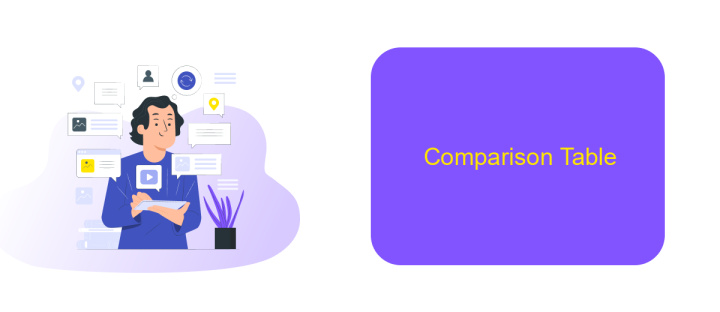Pega Vs UiPath
In the rapidly evolving landscape of automation, two prominent platforms, Pega and UiPath, stand out for their unique capabilities and features. This article delves into a comparative analysis of these industry leaders, examining their strengths, weaknesses, and ideal use cases to help businesses make informed decisions on which solution best aligns with their operational needs.
Introduction
In the rapidly evolving world of automation, businesses are increasingly turning to advanced tools to streamline their processes. Among the most prominent players in this space are Pega and UiPath, each offering unique capabilities to enhance operational efficiency and drive digital transformation.
- Pega: Known for its robust Business Process Management (BPM) capabilities, Pega provides a comprehensive suite for automating complex workflows and customer engagement.
- UiPath: A leader in Robotic Process Automation (RPA), UiPath excels in automating repetitive tasks, integrating seamlessly with various applications and systems.
Choosing between Pega and UiPath depends on specific business needs and the nature of tasks to be automated. For instance, while Pega excels in end-to-end process automation, UiPath is ideal for task-specific automation. Additionally, services like ApiX-Drive can further enhance integration capabilities, allowing seamless connectivity between different platforms and ensuring a cohesive automation strategy.
Key Features and Capabilities

Pega offers a robust suite of features designed to streamline business processes through intelligent automation. Its adaptive analytics and AI-driven decision-making capabilities enable organizations to optimize workflows and improve customer engagement. Pega's low-code development environment allows users to create and modify applications swiftly, reducing the need for extensive coding knowledge. The platform also supports seamless integration with various third-party systems, including popular tools like ApiX-Drive, facilitating efficient data exchange and process automation.
UiPath, on the other hand, excels in robotic process automation (RPA), providing tools to automate repetitive tasks across diverse applications. Its intuitive drag-and-drop interface makes it accessible for users with minimal technical expertise. UiPath's advanced AI and machine learning models enhance the accuracy and efficiency of automated processes. Additionally, the platform offers extensive integration capabilities, including connectivity with ApiX-Drive, enabling users to effortlessly link multiple systems and streamline workflows. Both Pega and UiPath provide robust solutions, each with unique strengths tailored to different automation needs.
Similarities and Differences

Pega and UiPath are both powerful automation tools, but they serve different purposes and have distinct features. Pega is a Business Process Management (BPM) and Customer Relationship Management (CRM) platform, while UiPath specializes in Robotic Process Automation (RPA).
- Integration Capabilities: Both Pega and UiPath offer robust integration options. Pega excels in integrating with various CRM and BPM systems, whereas UiPath is designed to work seamlessly with a wide range of applications through its RPA capabilities. Services like ApiX-Drive can facilitate these integrations by automating data transfer between platforms.
- User Interface: Pega provides a more comprehensive interface for end-to-end business process management, while UiPath focuses on a user-friendly interface for automating repetitive tasks.
- Scalability: Pega is highly scalable and suited for large enterprises with complex processes. UiPath, on the other hand, is scalable but primarily aimed at automating specific tasks within broader processes.
In summary, while Pega and UiPath share some similarities in their automation capabilities, they are tailored for different use cases. Pega is ideal for managing and optimizing business processes, whereas UiPath excels in automating repetitive tasks. Both can benefit from integration services like ApiX-Drive to streamline data flow and enhance operational efficiency.
Comparison Table

Pega and UiPath are two leading platforms in the realm of automation, each offering unique features and capabilities. While Pega focuses on business process management and case management, UiPath excels in robotic process automation (RPA), making it a versatile tool for automating repetitive tasks.
Both platforms have their strengths and weaknesses, and the choice between them often depends on specific business needs. Key factors to consider include ease of use, scalability, integration capabilities, and cost.
- Ease of Use: UiPath is generally easier to use with its drag-and-drop interface, while Pega requires more technical expertise.
- Scalability: Pega offers robust scalability for large enterprises, whereas UiPath is suitable for small to medium-sized businesses.
- Integration Capabilities: Both platforms offer integration options, but Pega has a slight edge with built-in tools. For seamless integrations, ApiX-Drive can be utilized to connect various applications effortlessly.
- Cost: UiPath tends to be more cost-effective for smaller projects, while Pega's pricing is better suited for larger, enterprise-level implementations.
In conclusion, the decision between Pega and UiPath should be based on your organization's specific needs and long-term goals. Both platforms offer powerful automation solutions, but their optimal use cases differ significantly.
Conclusion
In conclusion, both Pega and UiPath offer robust automation solutions tailored to different business needs. Pega excels in providing end-to-end business process management and customer relationship management capabilities, making it ideal for complex, enterprise-level applications. On the other hand, UiPath specializes in robotic process automation, offering user-friendly tools for automating repetitive tasks, which can greatly enhance productivity and efficiency.
When it comes to integration, services like ApiX-Drive can be invaluable. ApiX-Drive simplifies the process of connecting various applications and automating workflows, which can be particularly beneficial when using platforms like Pega and UiPath. By leveraging such integration services, businesses can ensure seamless data flow and enhanced operational efficiency, making their automation efforts even more effective.
- Automate the work of an online store or landing
- Empower through integration
- Don't spend money on programmers and integrators
- Save time by automating routine tasks
FAQ
What are the main differences between Pega and UiPath?
Which platform is easier to implement for a non-technical team?
Can Pega and UiPath be integrated together?
What are the typical use cases for Pega and UiPath?
How can I automate data transfer between Pega and UiPath?
Time is the most valuable resource for business today. Almost half of it is wasted on routine tasks. Your employees are constantly forced to perform monotonous tasks that are difficult to classify as important and specialized. You can leave everything as it is by hiring additional employees, or you can automate most of the business processes using the ApiX-Drive online connector to get rid of unnecessary time and money expenses once and for all. The choice is yours!


